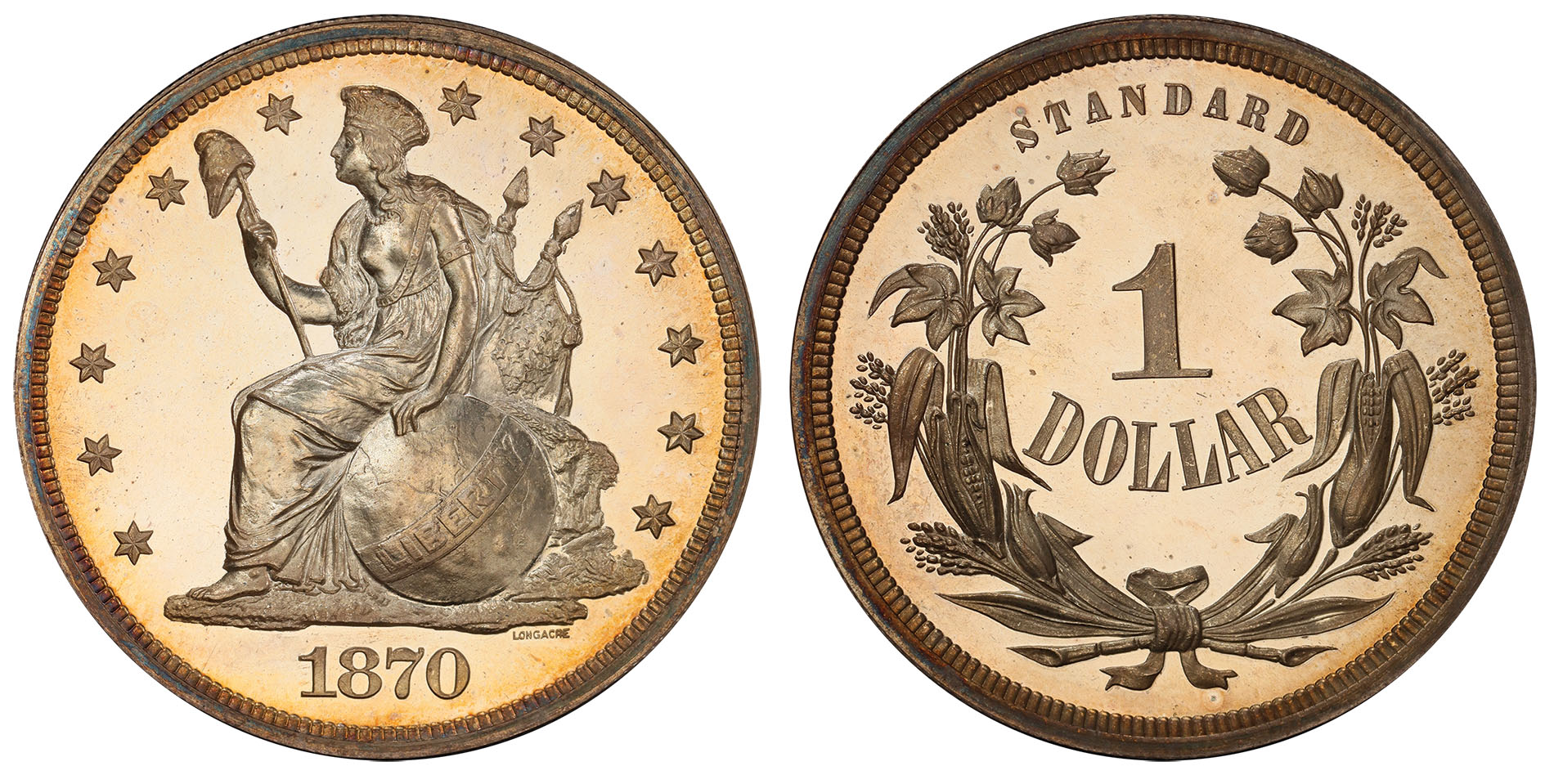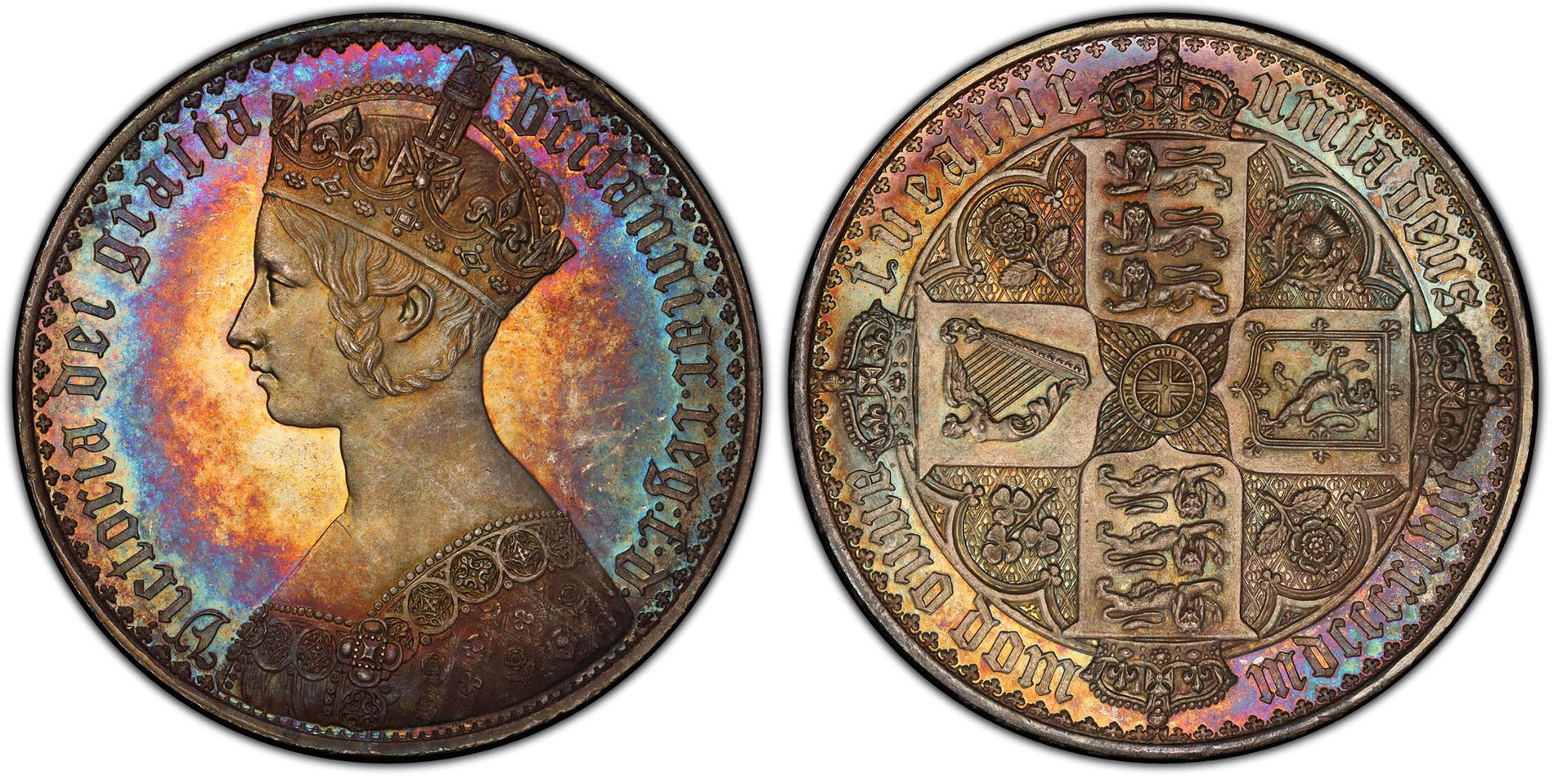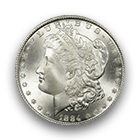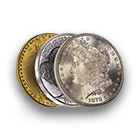In the captivating chapters of American numismatic history, few names shine as brilliantly as James Barton Longacre's. A virtuoso engraver and the esteemed chief engraver of the United States Mint during the mid-19th century, Longacre contributed artistic work for our nation's coinage at measure that is nothing short of legendary. Numismatic researchers and collectors alike are well-acquainted with the fact that William Barber, just a year after Longacre's passing in 1869, brought the Longacre Indian Princess design patterns to life.
The U.S. Mint embarked on a remarkable journey to craft a series of pattern coins as a tribute to the great James Longacre. These coins were destined for select collectors, esteemed government officials, and even foreign dignitaries. Among these, the inaugural pieces were the dollars, featuring various renditions of Longacre's iconic Indian Princess design. This departure from the conventional Greco-Roman portrayal of Lady Liberty, instead depicting her as a Native American woman, was a truly revolutionary and pioneering choice. This choice was influenced by the mid-19th-century fascination with Native American culture and the desire to forge a uniquely American identity. This spectacular dollar series comprises 12 distinctive issues, each bearing its own Judd number, ranging from J-1008 to J-1019.
The first of these distinctive designs graces the obverse with an Indian Princess seated beside a globe, adorned with a headdress inspired from Native American culture. The word “LIBERTY” gracefully arcs across the center of the globe, and in her hand, Liberty holds a pole crowned with a Phrygian cap. The reverse proudly displays the word “STANDARD” at the top, with “1 DOLLAR” encircled by a wreath of cotton and corn.
Among the examples of these dollars, we find rare combinations:
- J-1008, in silver with a reeded edge, boasting only three or four known specimens
- J-1009, in silver with a plain edge, with a mere three confirmed specimens
- J-1010, in copper with a reeded edge, with only four or five known examples
- J-1011, in copper with a plain edge, with around eight known
- J-1012, in aluminum with a reeded edge, counts about three specimens, including one in the Farouk collection
- J-1013, in aluminum with a plain edge, offers fewer than three confirmed examples (Notably, specimens were found in the collections of King Farouk and Lenox Lohr, though it remains uncertain if these listings represent the same or distinct coins. The recently sold PCGS PR65 specimen at Superior September 2005, Simpson-Heritage August 2021, Heritage January 2022, and Heritage July 2022 graded PCGS PR66, although lacquered, is almost certainly the coveted Farouk coin.)
The second rendition of the Indian Princess Dollar retains the same obverse design but takes a bold departure from tradition on the reverse of the Liberty Seated Dollar. This version of the dollars boasts examples in various combinations:
- J-1014, in silver with a reeded edge, with fewer than a dozen known
- J-1015, in silver with a plain edge, also with fewer than a dozen specimens
- J-1016, in copper with a reeded edge, accounting for over a dozen known pieces
- J-1017, in copper with a plain edge, with a similar count of over a dozen known specimens
- J-1018, in aluminum with a reeded edge, with only four known
- J-1019, in aluminum with a plain edge, with at least three confirmed examples
These remarkable coins have been sought after and cherished by renowned collectors from the moment they were struck. Among these collectors are names that resonate through the numismatic world, including King Farouk, Bob R. Simpson, William R. Sieck, and Wallace Murphy, to name but a few. It should be noted that there is also a series of pattern dollars struck in 1871 with a variation of the Indian Princess design not mentioned in this article.
Before these remarkable pattern coins, Longacre's most celebrated Indian Princess design graced the obverse of the Type 2 gold dollar coin in 1854, replacing the earlier Liberty Head design. Additionally, his Indian Princess design found its way onto the newly minted $3 gold piece, a coin believed to have been crafted for the convenience of purchasing a full sheet of 100 stamps, priced at 3 cents each in 1854. James Longacre's Indian Princess design marked a bold new direction reflecting the evolving times and cultural influences of mid-19th-century America. Despite initial controversy, it has since become an iconic and cherished facet of American numismatic history.
Longacre's groundbreaking approach to coin design left an indelible legacy that transcended his tenure at the United States Mint. Among Longacre’s myriad designs, the Indian Princess motif stands as a testament to American coinage’s capacity to evolve and embrace the cultural and artistic influences of each era. As a result, it remains a cherished favorite among collectors and numismatists, who hold it dear for its historical significance and artistic splendor alike.










 Copper & Nickel
Copper & Nickel
 Silver Coins
Silver Coins
 Gold Coins
Gold Coins
 Commemoratives
Commemoratives
 Others
Others
 Bullion
Bullion
 World
World
 Coin Market
Coin Market
 Auctions
Auctions
 Coin Collecting
Coin Collecting
 PCGS News
PCGS News